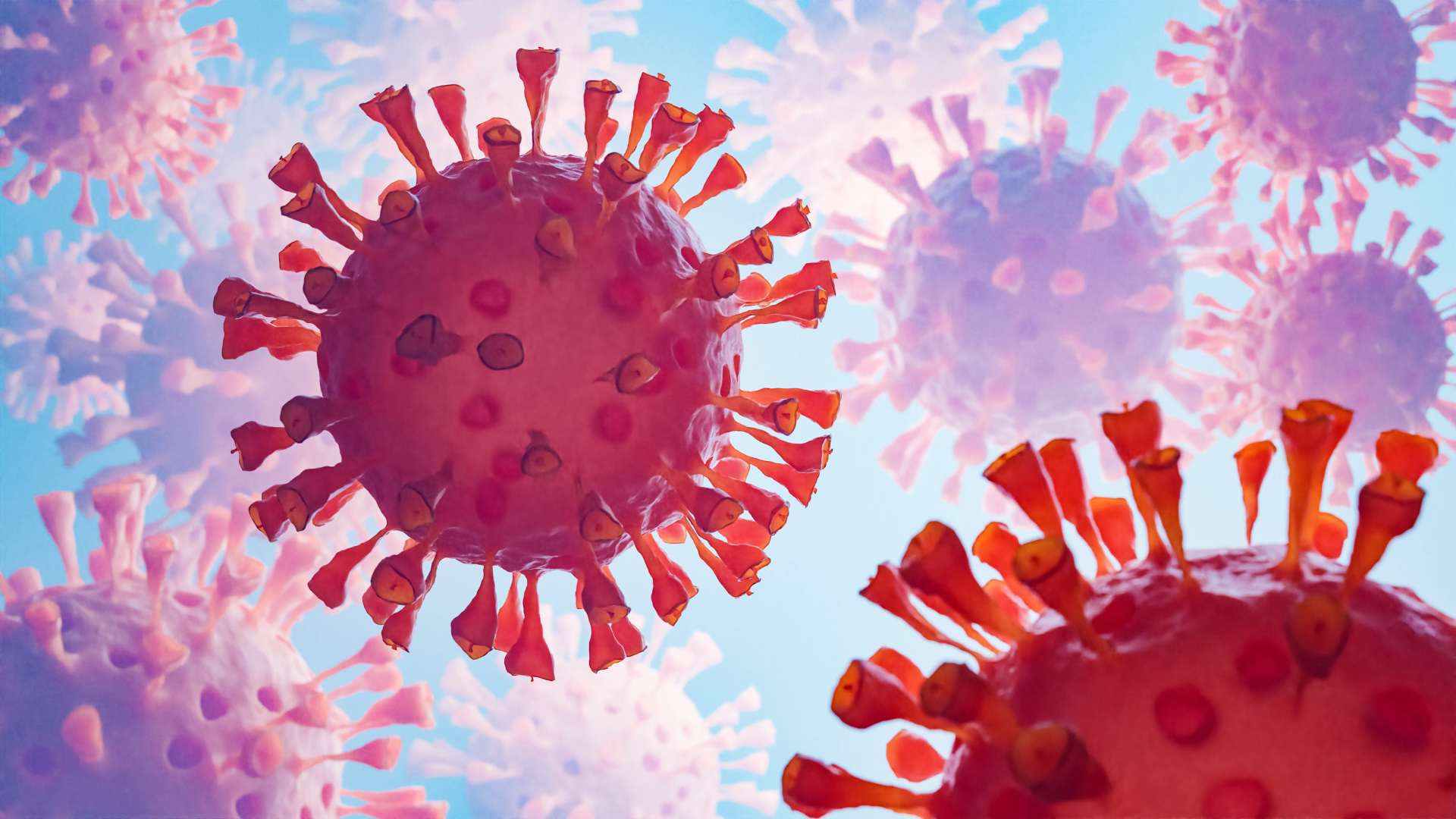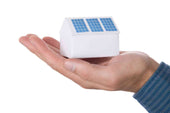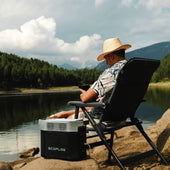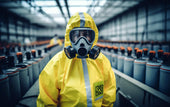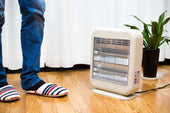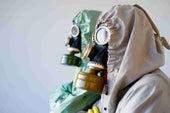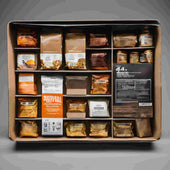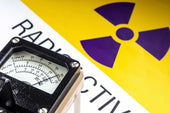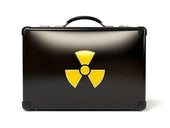As of July 1, 2020, there were approximately 10.7 million cases of Coronavirus and 516,000 deaths. Of these, 5.48 million had already recovered from the virus.
Since this is a new strain, we don't know how dangerous the Coronavirus can be. We will not know until more data comes in. However, the estimates for the mortality rate of the elderly are over 3% and 1% for the young ones. This article will discuss Coronavirus, its symptoms, and the current statistics worldwide.
We will also discuss the situation of COVID-19 in the United States and introduce the steps that the administration is taking to slow the spread of the virus and save Americans' lives.
Finally, we will discuss moving forward amidst the COVID or the 'new normal.'
Coronavirus
According to the World Health Organization (WHO), coronaviruses (COVID-19) are a large family of viruses that cause respiratory illnesses. It ranges from the common cold to severe diseases like Severe Acute Respiratory Syndrome (SARS-CoV) and Middle East Respiratory Syndrome (MERS-CoV).
On December 31, 2019, China alerted the World Health Organization about several cases of unusual pneumonia in Wuhan, a port city of 11 million people in central Hubei province.
The infection was traced to a seafood market in Wuhan that also sold live animals for consumption. Coronaviruses are zoonotic. This means that the virus is being transmitted between humans and animals. The research found that SARS-CoV can be transmitted from civet cats to humans.
Meanwhile, MERS-CoV can be transmitted from camels to humans. Several known coronaviruses circulate through animals that have not yet infected humans.
On March 11, 2020, the WHO characterized the Coronavirus as a pandemic. It has designated the outbreak with a high-level warning similar to that for Ebola, Polio, Swine Flu, and the Zika virus. The international health alert is a call to countries worldwide to coordinate their response under the guidance of the WHO.

Symptoms of Coronavirus
Those infected with Coronavirus or COVID-19 may have little to no symptoms. Sometimes, you may not know that you have symptoms of the virus because it can be similar to flu or cold.
Although not yet confirmed, Chinese health experts believe the virus can be transmitted before symptoms appear. After exposure to the virus, symptoms last 14 days, the longest-known infectious period for this disease.
Most people who are infected show signs within five to six days. According to the WHO, the signs and symptoms of the infection include cough, fever, shortness of breath, and breathing difficulties.
The Spread of Coronavirus
Coronavirus continues to spread worldwide, and countries are stepping up efforts to contain the spread. Like the flu and other respiratory illnesses, the virus spreads from one person to another nearby.
When you contact an infected person, the virus can be transmitted through the droplets of bodily fluids dispersed in the air. Coughing or sneezing can enable the transfer of mucus or saliva to you. You can pick them up by touching infected surfaces and your face. Scientists provide that sneezes and coughs can travel several feet. This can also get suspended in the air for up to 10 minutes.
Meanwhile, how long the virus will survive outside its host has yet to be determined. The transmission of the coronavirus is of deep concern to public transport. The droplets with Coronavirus can pass between passengers on surfaces of armrests and airplane seats.
Worldwide Response to Coronavirus
China has placed Wuhan under lockdown. This is the same as other cities in China that have affected more than 60 million people. However, this has prevented the spread of the virus to all provinces.
As the days passed, the number of confirmed cases rose. As such, the economies of the countries are taking increasingly drastic action. Airlines have stopped flying to China, and some countries have evacuated their citizens from Hubei and Wuhan, China.
Meanwhile, some countries closed their borders with China. It has even banned the entry of the Chinese people. According to the WHO, it has been confirmed that person-to-person transmission is the cause of infection in other countries.
Even with the advancement of science and technology, a vaccine against Coronavirus is unlikely to be available within a year. As such, public health measures to stop the spread of the virus are essential to containing the outbreak.
Indeed, restrictions on movement will not entirely stop the spread of disease. However, they will help slow its progress, giving some areas more time to avoid infection and prepare.
Moreover, it will limit the strain on health infrastructure by simultaneously reducing the number of infections.
Coronavirus in Hot or Cold Weather
Doubts over a theory that warmer weather can prevent the spread of Coronavirus, combined with the virus surge in Southeast Asia and the low cases of infections in some Southeast Asian countries, gave hope to Europe and America as they headed into spring.
However, countries like Malaysia, Thailand, and the Philippines have recorded their highest infection rate in the past few days. As such, seasonal factors might only play a limited role in the spread of Coronavirus.
The warm weather might influence the spread, but it will not end all. What is important is how Southeast Asian countries isolate cases and remove people from communities. That is the most significant factor and not the weather. Coronavirus can be transmitted in all areas, including humid and hot weather.
Moreover, there is no reason to believe cold weather can kill Coronavirus or other diseases. Regardless of where you live, it is best to adopt protective measures to protect yourself and your family.
Cases in the United States
The Centers for Disease Control and Prevention responded to an outbreak of different respiratory diseases caused by the Coronavirus.
Apart from the CDC, various public health laboratories in the USA test for the virus. In the United States, there are around 2,624,873 people who have been infected with Coronavirus, according to the Centers for Disease Control and Prevention.
The deaths have been tallied to 127,299. As of July 1, 2020, the United States reported 52,789 new coronavirus cases in one day. Experts provide that this was the largest single-day total since the beginning of the pandemic.
COVID Cases Continue to Rising
President Donald Trump said he still believes the Coronavirus will "just disappear" even as cases explode across the U.S. Meanwhile, experts say this is unlikely unless people develop immunity to the virus.
Nevertheless, the virus can cause the death of millions of people until a vaccine is developed. Furthermore, some say that there is a good chance that the Coronavirus will never go away on its own.
States across the country are drafting plans to gradually return to normalcy. Michigan, California, and New York City are the latest to provide strategies for their reopening.
Reports provide that more than 800,000 new cases of COVID in June. These are from the Sun Belt states that reopened. Since the start of the pandemic, there are at least 125 602 deaths have been reported.
COVID Outbreak in Major Cities in the United States
The site of the country's largest outbreak is New York City. In April, the curve rose sharply before reaching over 170,000 total cases. Since then, there have been new cases, from about 10,000 per day in mid-April to fewer than 700 per day in late June. In some states, such as Hawaii, the number of cases has declined to just a dozen per day. But still, others are growing. In Arizona, the cases leveled off at around 15,000 in May.
Meanwhile, there was a sudden sharp spike in the cases in June. Indeed, the Coronavirus has hardly affected some states more than others. A large number of positive cases have been recorded in New York City.
As of June, New York, New Jersey, and Connecticut had reported 30% of the total number of COVID cases and 42% of deaths in the United States. New cases are recorded daily in these three states. Big states like Texas, California, and Illinois have recorded many cases nationwide.
Meanwhile, some smaller states, like Iowa and Nebraska, burden the disease relative to their population sizes. They have high case counts per capita. Michigan and Louisiana have a high death count per capita.
President Trump Issues New Guidelines to Combat Coronavirus Spread
President Trump recognized the severity of the coronavirus pandemic and released strict guidelines to limit Americans' interactions in the next two weeks. This will also augment doctors' and hospitals' duty to respond to those affected. For example, Americans should avoid gathering in groups of more than ten people, and everyone must avoid eating and drinking at food courts, bars, or restaurants.
Moreover, attending work and school must be avoided as much as possible. The President has also recommended that those who experienced minor symptoms stay at home, although it is not mandatory.
Meanwhile, President Trump acknowledged that the crisis might continue until July or August. It might even plunge the nation into a recession. The governors announced the closures of restaurants, bars, and other venues across America.
The new guidance also calls for the closure of gyms and other venues with evidence of community transmission. The President has also urged the governors to obtain ventilators and other equipment.
Hospital systems called for help because of a lack of medical supplies and beds as the number of patients increased. Some hospitals are beginning to postpone procedures to free up medical personnel and space.
The United States Efforts and Resources
Indeed, the Department of State is doing its best to inform and protect U.S. citizens in the homeland and overseas. The administration has committed to building a global health security capacity for today's and future outbreaks. It has also planned to reduce the impact on U.S. companies and the supply chain overseas.
The administration's priority is to protect American citizens and slow the spread of the virus. They have implemented strict travel restrictions together with their interagency partners. This is true for individuals in high-risk areas by the U.S. health authorities.
They update country-specific Travel Advisories and issue timely alerts to keep Americans informed and safe when they live or travel abroad.

Stimulus Packages
Since the beginning of the pandemic, the administration has passed four stimulus packages. On March 13, 2020, President Trump declared a state of emergency, allowing faster responses and relief efforts across America. He has also provided additional resources for testing and treatment.
First Stimulus Package
The First Stimulus Package, the Coronavirus Preparedness and Response Supplemental Appropriations Act, was passed on March 6, 2020. This package focuses on research, vaccine development, slight business relief, and telehealth flexibility.
Second Stimulus Package
The second stimulus package, the Families First Coronavirus Response Act, was passed on March 18, 2020, and funded by $104 billion. It focused on access to COVID-19 testing, unemployment insurance, emergency sick and family leave, and nutrition assistance.
Furthermore, the bill provides emergency funding to ensure nutrition assistance programs have enough resources to help those impacted by the COVID-19 public health emergency. This includes the Supplemental Nutrition Program for Women, Infants, and Children (WIC), food banks, and senior nutrition programs.
Third Stimulus Package
The third stimulus package, the Coronavirus Aid, Relief, and Economic Security Act (CARES Act), was passed on March 27, 2020, and funded $2 trillion.
The focus of this stimulus package was the Broad Economic Stimulus, which aims to assist individuals, businesses, and infrastructure. It includes direct payments, expanded unemployment insurance, payroll taxes, student loans, and emergency relief.
Fourth Stimulus Package
The fourth package, the Paycheck Protection Program, and Health Care Enhancement Act was passed on April 24, 2020, and funded with $484 billion. It focuses on providing loans for small businesses, hospitals, and testing centers.
On May 15, 2020, the U.S. House of Representatives passed the Heroes Act, another multi-trillion-dollar relief package, to supplement the aid provided in these packages. This bill still needs to be enacted as a law, but Congress is considering additional comfort. It aims to provide economic relief for individuals, hospitals, and state and local governments.
Administration for Community Living Information for Adults and People with Disabilities
Adults and those with underlying medical conditions are at risk for COVID-19. Residents of nursing homes or other long-term care facilities may be at risk. As such, avoiding exposure and learning about the symptoms is essential.
Last April 12, 2020, the Federal Emergency Management Agency (FEMA) released a policy that authorizes the purchase and distribution of food as an Emergency Protective Measure. Under this policy, applicants will receive funding for the first 30-day period. Then, they can request an additional 30-day extension. Depending on the applicant's requested reimbursement period, eligibility for the first 60 days under this policy can end as soon as May 13, 2020.
The policy was supposed to follow FEMA guidelines to meet immediate needs. This is true until other federal programs or funding become available. However, for many reasons, other federal programs may not meet the needs of those coping with COVID-related food insecurity within the determined timeframe.
As such, Public Assistance has stated that extensions beyond the initial 60 days are allowable for COVID-19.
Immunity to Coronavirus
The coronavirus is a new strain, and no immunity exists for anyone who will encounter it. Experts agree that some level of immunity will naturally develop in one's body over time.
However, those with compromised immune systems, like sick people and the elderly, are most at risk. They can become severely ill or die from the Coronavirus. Research shows that viruses that spread quickly have low mortality rates.
Meanwhile, viruses that spread slowly can have high mortality rates. Although the total number of deaths exceeds that of the 2002-2003 SARS outbreak, the current mortality rate is still lower than that of SARS. The mortality rate of Coronavirus is around 3%, while SARS killed 9.6% of those infected.
How to Protect Yourself
Experts recommend washing your hands frequently with soap and water to contain the virus and protect yourself. Cover your face with cloth or tissue, especially when sneezing or coughing.
While facemasks are popular today, experts doubt their effectiveness against airborne viruses. Masks might provide some protection to you and others. However, since they are loose and made of absorbent materials, droplets of bodily fluids with a virus can still pass through. If you have experienced symptoms, you must visit your physician.
Moreover, avoid direct contact with live animals. Many countries have been mandated to close their borders, prevent travel, and subject themselves to self-quarantine for at least two weeks.
Slow the Spread of Coronavirus
All of us must do our part to slow the spread of the coronavirus. Make sure to avoid social gatherings in groups of more than ten people. Avoid close contact with sick people. Stay away from them or at least 6 feet or two arm lengths. Work or take the classes online or at home. Avoid drinking or eating at bars, restaurants, and food halls. You can buy food at drive-thrus, pick it up, or deliver it to your home. Avoid discretionary travel, social visits, and shopping trips as much as possible.
Ensure you have over-the-counter medicines and medical supplies to help you treat the symptoms. Most affected people can recover at home. Prepare enough household items and groceries on hand so you will be prepared to stay at home for an extended period.
What to Do if You Caught the Virus
A hotline is set up in some countries, like the United States, for people who think they have the virus. You can contact the hotline before going to the hospital. This is done to avoid spreading the virus in the healthcare facility or on your way there.
As soon as you suspect you are ill, you must seek specialized help. This will prevent you from limiting your contact with others as much as possible. As of today, there is no vaccine or medicine for Coronavirus.
Home remedies and traditional medications can provide comfort and alleviate the symptoms of the disease. However, according to the WHO, no proof existing medicine can cure or prevent it.
Preparation for Self-Quarantine
The duration of a self-quarantine is at least 14 days. Meanwhile, the period for a lockdown will depend upon a local government's decision. With the likelihood that more people worldwide will be homebound, preparing your home for that eventuality is one concern.
Some things to stock are beverages, non-perishable foods, sauces, pasta, rice, pulses, crackers, cereal, dry goods, sugar, tea, and coffee. Stocking basic medical supplies is also recommended. Include over-the-counter medications to help with possible symptoms since it is similar to a common cold. Medicines for cough, congestion, and fever are recommended.
Moreover, it is best to keep a one-month supply of medications on hand if it becomes difficult to get to a pharmacy. Hygiene supplies include soaps for bathing, handwashing, laundry, and disinfecting surfaces.
Preparing the activities you plan to do at home is also important. Prepare a list of books to read for entertainment or exercise subscriptions that you can use even without going out.
The WHO recognized that the crisis had caused an increase in anxiety among the public. Its recent guidance advised people who are feeling stressed to avoid watching, reading, and listening to news excessively.
Avoid Anti-Inflammatory Medicines
It will be best to take paracetamol than anti-inflammatory drugs for pain relief since this aggravates the issue. However, if you are already taking anti-inflammatory drugs, then you can ask your doctor for advice.
Apart from paracetamol, you can also take acetaminophen and Tylenol. Studies have shown that anti-inflammatory drugs can be a risk factor for those with infectious illnesses. This is because they tend to lower the body's response to fighting the virus.
Coping With Stress
Older people are at higher risk of COVID-19. Thus, this might result in increased stress during the crisis. However, there are things that you can do to help you cope with that stress. You can take breaks from reading, watching, or listening to news stories or articles posted on social media.
Sometimes, hearing about the pandemic so often can upset you. Take proper care of your body. Take deep breaths, meditate, and stretch. Eat a balanced diet, exercise regularly, get enough sleep, and avoid drugs and alcoholic drinks. Have some time to unwind. Do other activities that you love and enjoy. Connect with your friends and loved ones. Talk to people you trust about your worries and your feelings.
You can call your healthcare provider if you think that stress gets in the way of your daily routine for several days in a row. If you or someone you know feels overwhelmed with depression, sadness, or anxiety, you can call 911.
Call the Disaster Distress Helpline and the Substance Abuse and Mental Health Services Administration at 1-800-985-5990.
COVID: Moving Forward
Most countries were unprepared for the COVID-19 pandemic. Scientists believe that the virus will not disappear any time soon. We must prepare ourselves for future outbreaks of the virus. Indeed, predicting the evolution of the pandemic is challenging.
However, it needs to be done for various reasons. Everyone is asking, 'When will this be over?" Today, many countries have eased lockdown restrictions. Residents are gradually returning to the old spaces that now feel unfamiliar. Many of these changes will remain for some time.
Even when the spread of the Coronavirus is contained, the risk of a new contagion will remain. This is true as long as a vaccine is unavailable, which can take nine months to two years.
Indeed, for those planning our cities and public spaces, the pandemic is a threat requiring immediate action. This is an opportunity to rethink how we live and interact. Studies show that humans do not cope well with isolation, and experts say past epidemics have had several effects on mental health.
Sometimes, this can even result in post-traumatic stress disorder. Restoring social spaces when they are safe is more than a financial decision. It is one way to look after the well-being of the people and help them recover from a global health crisis.

Potential Scenarios of Future Outbreaks
Experts agree that there can be mini-waves of smaller outbreaks in the coming months. There will be periods of only a few cases in between. The location of the epidemic will depend on regional variations and mitigation measures that are present.
In another scenario, experts predict a massive second wave. This wave can be twice as large and have a long-lasting effect. This is what happened in the 1918 Spanish flu pandemic. Many cases followed a moderate wave in September and smaller peaks in 1919.
Finally, in another scenario, experts predict that there will be continued COVID-19 outbreaks until 2022. The only thing that can stop all these potential scenarios is the development of a vaccine. If one doesn't become available soon, there can be continued outbreaks until at least half of the world's population has been infected. As of today, only 5% of the world has been infected.
The Importance of Trust
Research shows that trust is the backbone of social and economic recovery. To return to normal life, people must feel safe and trust that others look after their safety.
In restaurants, restoring trust means that the kitchen must show that the food is handled with the highest hygiene standards. Other safety measures will be more likely to be digital. There will be a boom in digital menus. This will not be used to order takeaway. However, it will be used when eating at the restaurant. Soon, the owner would print a Q.R. code on the table.
Then, the customer will visualize the menu by scanning it with their phones. In gyms, the owners might eliminate showers and lockers to facilitate social distancing better. Gym attendance will be staggered to allow for housekeeping sessions for the entire day.
The Best Defence is Preparation
Experts recommend governments and local authorities plan for future outbreaks as best they can. This includes triggering emergency lockdowns and other mitigation strategies whenever necessary. In a worst-case scenario, planning is necessary when no vaccine is available, and immunity cannot be achieved.
Furthermore, scientists believe that the administration must develop strategies to ensure that the health workers at the front line are appropriately protected from the virus. The governments are advised to create and build risk communication plans to communicate with their population that the pandemic is unlikely to end until late 2022.

